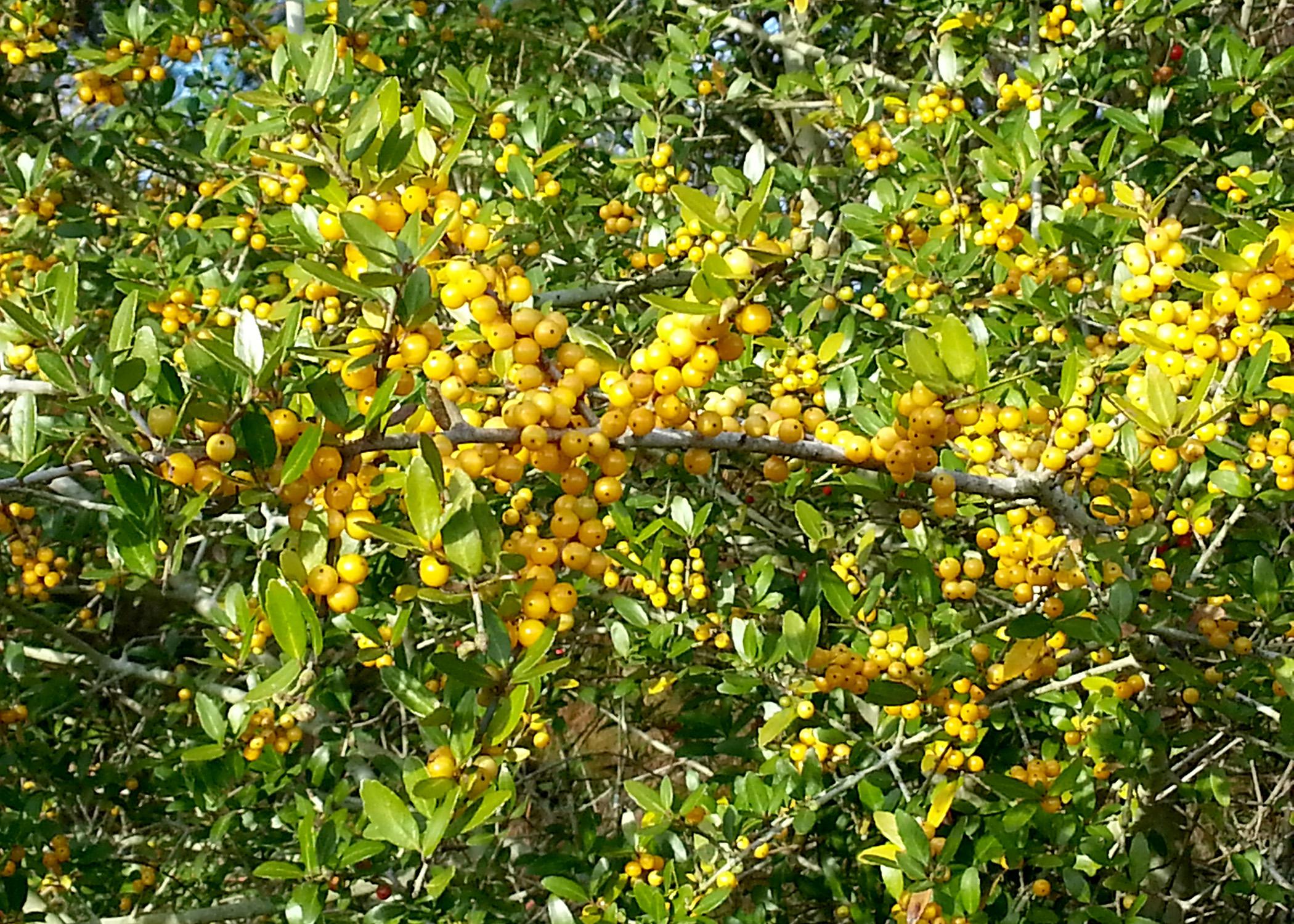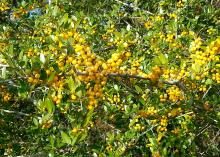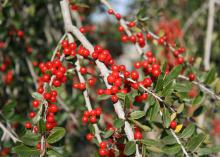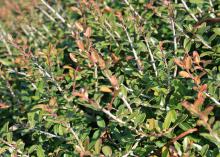Information Possibly Outdated
The information presented on this page was originally released on December 22, 2014. It may not be outdated, but please search our site for more current information. If you plan to quote or reference this information in a publication, please check with the Extension specialist or author before proceeding.
Yaupon holly makes a colorful Christmas
Winter is a challenging time in the landscape and garden. We’re limited in annual color options, and even my old favorites, pansies, may not be enough. That’s why we need to learn to rely on the backdrop of the summer, our landscape shrubs.
It seems these plants realize this is the season for them to step up and carry some of the load. You could call winter the berry season, as these red, colorful fruit are on display.
We are fortunate in Mississippi to have a quite a few native shrubs that are actually quite showy. One of my favorites is the yaupon holly. If you do any driving in the southern half of the state, this plant is on full display in mid-December. It literally seems to be popping out of the edges of woodlands everywhere!
Yaupon hollies have very distinctive berries. Sure, they’re red -- and I mean bright, candy-apple red -- but they also have a translucent quality that imparts a gem-like appearance. So in other words, yaupon hollies are actually garden jewels that sparkle in your landscape.
But did you know there are other yaupon holly berry colors? The bark of yaupon is a bright gray that accentuates the berry color very nicely. There are a few commercially available selections that have a mutation that produces yellow berries. Last year, I found a yellow-berried plant growing wild. I hope to be able to share this plant in a few years.
Yaupon holly’s botanical name is Ilex vomitoria. Native Americans made a tea from yaupon that was used in rituals and ceremonies and would induce vomiting. Sounds like a party I don’t want to go to.
The native yaupon holly should actually be called a small tree, as it grows up to 20 feet tall. Placed incorrectly, it could overwhelm a typical home landscape, but there are a couple of interesting selections of yaupon holly that are landscape worthy.
Weeping yaupon is a small tree that can grow to about 12 foot high. Its branches have a weeping or cascading growth habit. A dwarf selection called Schillings Dwarf is a slow-growing plant that is perfect for landscape mass or foundation plantings. This plant tolerates pruning but does not bear any fruit. New foliage is tinged with burgundy and purple and adds a hint of color.
As with all landscape plants, success begins with preparation. Always dig the planting hole at least two times wider than the container or root ball, but always plant it at the same depth it was growing in the container. It is actually better to plant it a little shallower than it had been growing.
Some of the latest landscape research has shown that keeping the crown of the plant an inch or two above the surface grade will result in greater survivability in our Mississippi landscapes. When combined with a 2-inch layer of mulch to conserve moisture, success is almost assured.
Besides adding beauty to our landscapes and food for the birds, the hollies’ berries color up at exactly the right time of year and are perfect for homemade Christmas wreaths and decorative garlands. Why not bring some of the dazzling displays of red berries indoors?
What can be more appropriate in this holiday season than a winter arrangement on the table or fireplace mantle?










